
table of contents
- Site conditions
- The right substrate
- Watering and fertilizing
- Cut
- Overwinter
- Repot
- Multiplication
- Diseases and pests
- frequently asked Questions
The agave is a real desert child and is often cultivated as a houseplant in this country, provided that the respective species is suitable for it. In terms of care, this succulent is rather undemanding.
In a nutshell
- is very suitable as a houseplant
- As a succulent plant, it can store large amounts of water in its leaves
- copes well with drought
- loves the sun and has a low nutritional requirement
- has to be repotted into a larger container every now and then
Site conditions
The agave should be in a warm, draft-free and above all full sun place - preferably in a south-facing window. Ideally, she gets full sunlight for five hours a day. In contrast to other indoor plants, dry air does not mind, so it does not need to be sprayed with water. If possible, it can also be outside from late May to October.
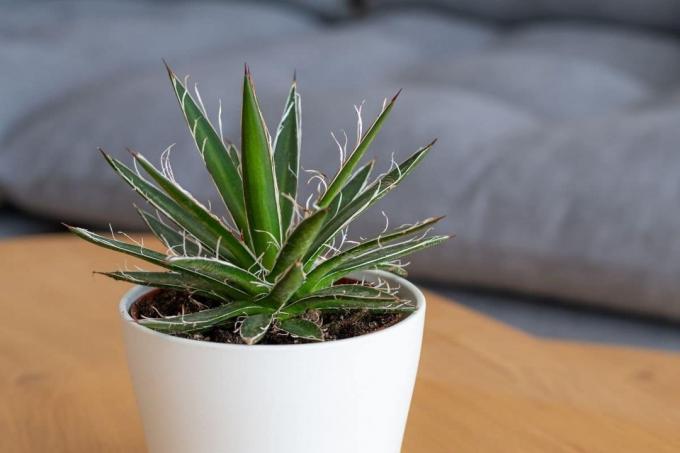
The right substrate
The trade offers special substrate mixtures for succulents and cacti. They are tailored to the needs of succulents and cacti, i. H. they are poor in nutrients and reduce the risk of waterlogging. If necessary, you can also make your own mixture of two thirds of commercially available potting soil and one third of pumice gravel, lava stones or quartz sand. However, you cannot do without a drainage layer in the pot.
Watering and fertilizing
- Agave gets by with little water and fertilizer
- too much water can cause root rot
- always water very sparingly
- about once or twice a week
- depending on the room temperature
- Let the substrate dry well after each watering
- preferably with low-lime water
- Agave grows very slowly
- Nutritional requirements are therefore low
- fertilize from April / May to September
- about every 14 days mostly sufficient
The best way to fertilize is to use one for cacti or Liquid fertilizer suitable for succulents, which is dosed and administered according to the manufacturer's instructions in order to prevent overdosing.
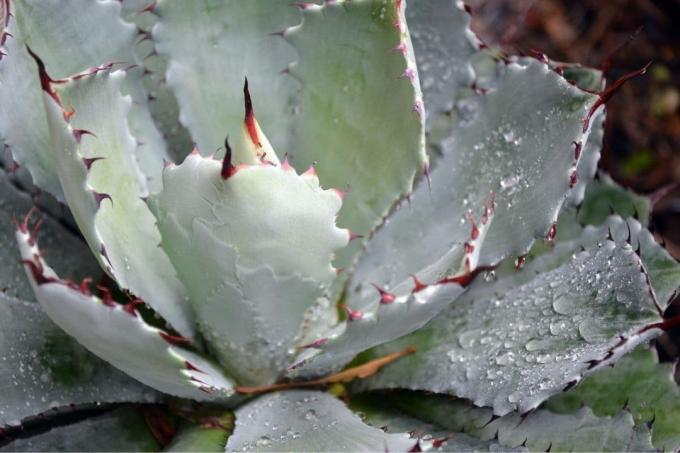
Tip: If the agave is in hydroponics, it usually only needs to be watered every three weeks and every six weeks in winter. A water level indicator can be helpful here.
Cut
Pruning measures, as known from other plants, are not necessary with the agave as a houseplant. On the contrary, they would rather damage the plant and, in the worst case, let it die. For optical reasons, only dead leaves can be cut off directly on the main stem with a sharp knife. But they should be completely dry. Any cuts that occur usually close by themselves.
Tip: When removing the leaves you should wear thick gloves to avoid injuries from the hard thorns on the leaf edges. You should also know that the juice of the agave is poisonous.
Overwinter
If the houseplant has been outdoors for the summer, it is important to bring it back inside before the first frost. in the The agave stands in winter also a little cooler at temperatures around 12 degrees and of course in a bright place. As a rule, there is no need to water or fertilize in winter. If the plant actually suffers from a lack of water, it shows this on the leaves, which then become slightly wrinkled. Then of course it should be poured.
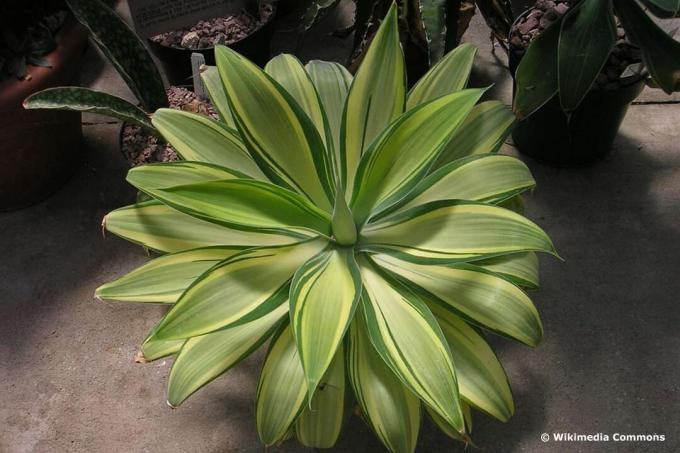
Tip: It is advisable to remove dust from the leaves every now and then by showering them or with a damp cloth.
Repot
Repotting an agave as a houseplant is not that easy, because there is a risk of injury due to the sharp thorns. To protect yourself from them, you can put smaller but sufficiently thick styrofoam sheets, wine corks or the like on the thorns and use them to carefully lift the plant out of the pot.
- The best time to repot is right after winter
- new pot should only be a little bigger
- Sufficient drainage holes are important to avoid waterlogging
- put a drain on the bottom of the pot
- made of gravel, expanded clay or pottery shards
- Fill the pot about halfway with substrate mixture for cacti
- Place the agave in the middle
- just as deep as in the old pot
- Fill up to a few centimeters below the edge with substrate
- Press the soil on and water a little
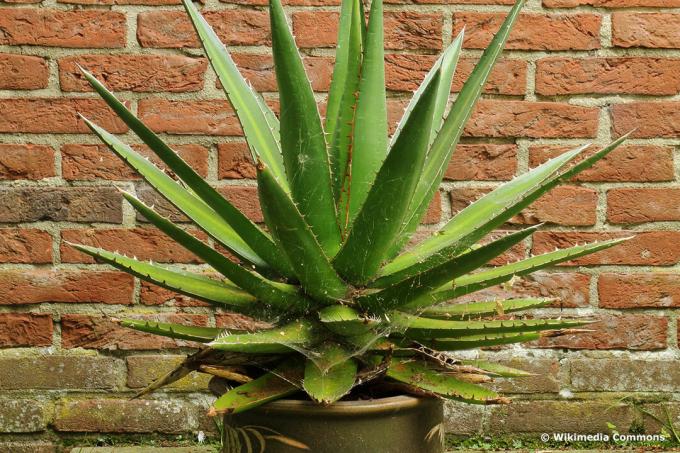
Tip: Even if this is advisable for many other plants, you should avoid shortening the roots and cutting the leaves when repotting the agave.
Multiplication
about offshoots
The propagation usually takes place via offshoots so-called Kindel. They form on the trunk or below the substrate surface and usually appear a little further away from the mother plant. Yet they are connected to their roots. Since you usually have to take the plant out of the pot to remove the child, it makes sense to separate it when you repot it.
- Cut off Kindel only with a sharp knife
- some already have roots
- Do not damage the stem of the mother plant too much when cutting
- To be on the safe side, treat the cut with charcoal powder
- then let it dry well
- Then put the mother plant back in place
- Put Kindel in cactus soil with or without roots
- about an inch deep
- Press down the substrate and water very sparingly until the roots have taken root
by sowing
Propagation by sowing is also possible. However, it is sometimes difficult to get the right seeds. If you have bought it, you can sow it all year round. First, let the seeds soak in lukewarm water overnight. Then they are sown about an inch deep in moist potting soil. The seeds usually germinate within three to ten weeks. From a certain size, the young plants can be planted separately in pots.
Diseases and pests
Root and stem rot
In most cases, mistakes in care are the cause of damage to the plant. As a houseplant, the agave is often affected by overwatering. This inevitably leads to root and / or stem rot and, if left untreated, to the loss of the agave. As long as it is still too badly damaged, you should stop watering immediately and let the substrate dry out completely. However, it is better to repot the plant in fresh and above all dry substrate. All rotten or otherwise damaged parts of the root should be removed. Even after repotting, there is no watering at first. As a preventive measure, you should pay attention to a well-drained substrate and be extremely sparing when watering.

Leaf chlorosis
Another common agave disease is leaf chlorosis. A slight whitish discoloration of the leaf rosette is typical for them. Water that is too calcareous is responsible. If the water on site is very lime, you can reduce the lime content by heating it to at least 60 degrees. After cooling down, the water can then be used for watering. Normal rainwater would be ideal.
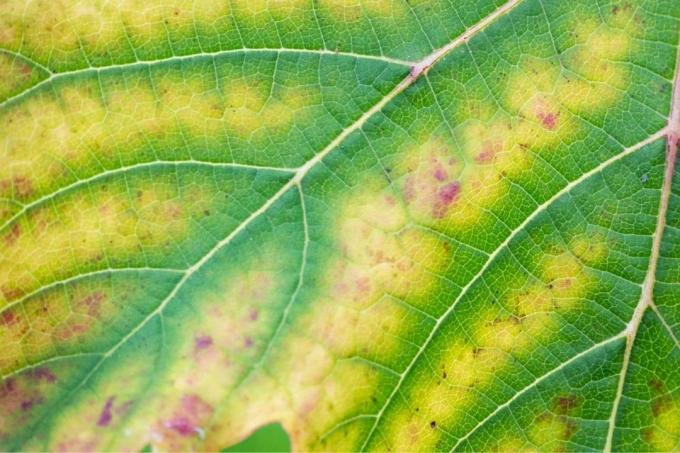
Scale insect infestation
Occasionally, it can also be infested with scale insects. You can recognize them by small oval, brownish tags. Home remedies such as soapy water, alcohol and soft soap or simply rinsing off with a hard jet of water are often not enough to combat it. A combination with suitable biological pesticides is therefore a good idea.
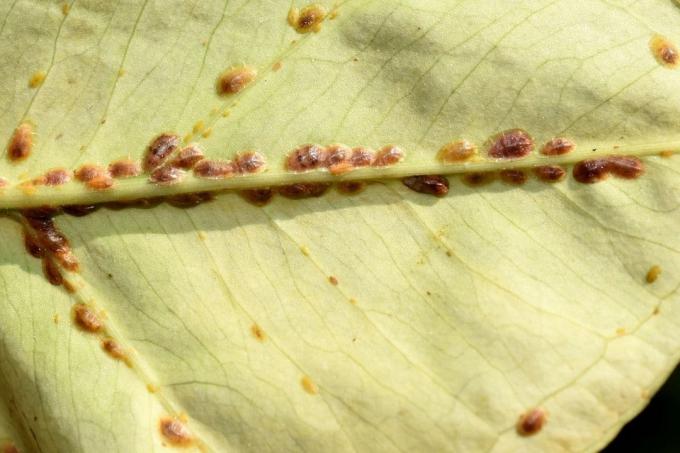
frequently asked Questions
In general, these plants should be repotted when the pot is well rooted. This is usually the case every two to three years. In the case of younger specimens, also annually if necessary.
In their natural locations, it can take 10-15 years to bloom. In indoor culture, it can even take up to 50 years for the first flower to bloom. In some species, the plants die after flowering.
The sap is poisonous for humans, but especially for dogs and cats. Both small children and pets should not come into contact with this plant. In sensitive people, mere contact can cause severe skin irritation and conjunctivitis. The sharp thorns can penetrate deeply into the skin and also cause irritation or inflammation.



